Cattle and Conservation
On the northern plains, ranchers play a crucial role in conserving wetlands and grasslands for breeding ducks and other wildlife
On the northern plains, ranchers play a crucial role in conserving wetlands and grasslands for breeding ducks and other wildlife
By Andrew McKean
Gary Anderson has seen his neighbors in Phillips County, Montana, try just about everything to make a living off their dryland farms. A realtor in the small, close-knit community of Malta, not far from the Saskatchewan border, Anderson has built a career helping his neighbors sell the home place or buy adjacent land to expand their operations, and he has spent many hours talking with them over farmhouse coffee about what the future holds. For the last couple of years Anderson has promoted a strategy that allows his neighbors to increase their profits, pay down debt, and slowly heal land that has struggled to produce reliable income for the past century. All of which is also helping put more ducks in the fall flight.

Photo Dean Pearson
THE STRATEGY: partner with state and federal agencies to apply an alphabet soup of conservation programs to protect native prairie and restore marginal cropland to grass for cattle production. "You could call it money in the mattress," Anderson says of payments land-owners receive for enrolling in conservation programs. "They allow producers to remain on the land, and in many cases turn a marginal operation into a profitable one. They also happen to be very good for ducks." The public investment in these ranch lands keeps carbon in the soil, helps sequester additional carbon, filters water, and reduces soil erosion. All of these numerous positive public benefits that come from well-managed private lands are recognized as "ecosystem services."
Anderson, who is a farmer and rancher himself, says the biggest obstacles to participation in conservation programs are a lack of awareness of the benefits and the complexity of the sign-up process. That's where Ducks Unlimited's Bob Sanders comes in. As manager of conservation programs in Montana, Sanders and his team of two DU biologists spend weeks at a time in Phillips and neighboring counties, meeting with farmers, ranchers, conservation partners, and bankers to pitch the benefits of prairie grass not only to producers' bottom lines, but to the natural systems that evolved with this undulating landscape of flowing hills and glacial depressions.
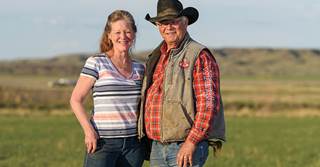
Gary Anderson and his wife, Barb, work with other ranchers in northeastern Montana to conserve wildlife habitat.
Photo BILLBUCKLEYPHOTOGRAPHY.COM
"Intact grasslands have existed in this part of the northern plains since the last glaciers receded over 7,000 years ago," says Sanders, who guides qualifying producers through bureaucratic thickets. "From an ecological standpoint, prairie-pothole wetlands are dependent on the grasslands around them to filter water, hold the soil, and prevent invasive plants from gaining a foothold. If you conserve the grass, you conserve the potholes too."
Since the northern plains were opened for homesteading more than a century ago, the prairie has been plowed under as successive generations of grain farmers have made bumper crops in wet years and gone bust when drought inevitably returned. In his travels, Sanders has seen firsthand how productive the prairie landscape can be, both for raising ducks and for growing grain. But he has also noticed that pasture lands are often more resilient than crop fields when conditions get tough.
"People ask me all the time: What does DU do in Montana?" Sanders says. "I tell them that our business is keeping ranchers in business. What do you need as a rancher? Grass and water. It turns out those are the same things that keep ducks in business around here."
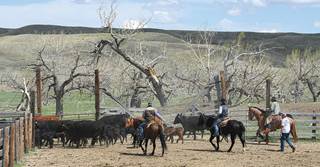
Photo BILLBUCKLEYPHOTOGRAPHY.COM
Water is especially precious in northeastern Montana, which receives less than 13 inches of precipitation in the form of rain and snow annually. Farming is a more reliable venture in eastern South Dakota, which has rich soils and receives about twice as much precipitation. This area of South Dakota also has some of the highest densities of wetlands on the northern plains, and just as Sanders observes in Montana, wetlands plus grass equals prodigious numbers of ducks and resilient prairie ecosystems.
Bruce Toay, Sanders' DU counterpart in South Dakota, notes that landowners are under economic pressure to plow native rangeland or continue farming land that is currently in row-crop production. This pressure is especially strong in this vanguard of the grain belt, which expands north each year with the development of shorter-season corn and soybean varieties.
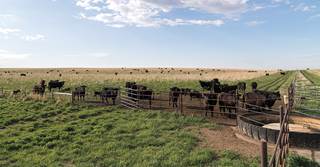
Photo Dean Pearson
"We see conversion of grassland fluctuate with the markets," Toay says. "There was a particularly big boom in corn and soybeans during the late 2000s, and we lost a ton of prairie over about a five-year period. Since then, many producers are recognizing that farming marginal ground no longer makes sense for their operations. We can help these landowners restore that ground back to grass that can be managed for cattle grazing. Restoring prairie and establishing grazing systems can be expensive, but we've seen that improving the health of native landscapes not only benefits the ecosystem, but also producers' bottom lines."
One of the producers who has worked with DU in partnership with South Dakota Game, Fish and Parks and the USDA Natural Resources Conservation Service (NRCS) is Briann Larson, who lives near Kimball. His place includes land that his grandfather, father, and uncle always kept in native prairie. "When corn hit eight dollars [per bushel], a lot of that prairie got plowed up," says Larson, who notes that as corn prices have climbed this year many of his neighbors are considering converting more grassland into a crop rotation. "You have to remember that corn isn't always going to be eight dollars or even six dollars. There will be a market correction and it will come down. But you can never replace the native sod."
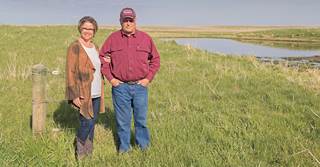
Briann and Lisa Larson have restored 2,000 acres of cropland to grass on their South Dakota property.
Photo Dean Pearson
Larson is coming as close as he can, returning some 2,000 acres of former cropland to grass, using intensive rotational grazing practices to encourage the growth of native grass species and eliminate nonnative ones like brome and Kentucky bluegrass. "It's a process, which is sometimes slower than I'd like," Larson says. "When I started out, I never knew what switchgrass or big bluestem looked like. Now, I'm not only seeing those, but also Indian grass and leadplantindicators that we're moving in the right direction."
He has enrolled his land in a perpetual conservation easement, which provides financial benefits for landowners but also comes with some voluntary limitations. "The cash and support for infrastructure is obviously a benefit," Larson says. "But so is seeing nature and wildlife respond. Mother Nature doesn't like a monoculture. She wants to see a variety of plants out there, the same variety that drew my grandfather to this place. The only two stipulations with the easement are I can't plow my grass under, and I can't hay my place until after July 16. The drawbacks? I'll have fewer acres of cornstalks or cover crops to graze, and I have to deal with mature grass hay. But by putting the land in a conservation easement, I can run this place from my grave, and that is deeply satisfying to me."
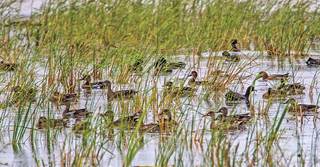
Photo Todd J. Steele
Easement terms differ according to state, region, and ecological priority. Larson's farm, located in the heart of South Dakota's top duck-producing region, is an especially high-priority candidate for conservation.
Northeastern Montana is also defined as an ecologically important landscape for waterfowl and declining species such as sage grouse and grassland songbirds.
"We're impacting about 10,000 acres annually in Phillips County alone with US Fish and Wildlife Service grassland easements," on land adjacent to Bowdoin National Wildlife Refuge and satellite waterfowl production areas, Sanders says. "The USFWS easements have been popular because their requirements are basic and simple: keep the grass right side up, graze it as you normally would, and you're good to go." If landowners choose not to sign an easement, they can opt simply to restore the grass.

Photo BILLBUCKLEYPHOTOGRAPHY.COM
Larry Smith, who owns a ranch in Phillips County, recently enrolled in a Wetland Reserve Easement (WRE) administered by the NRCS. "It was a win-win for both of us," Smith says. "My kids all want to be ranchers instead of farmers. Working with the WRE and DU was a very good way for us to accomplish what my family wants. We have a large reservoir and other wetlands on our place, and from a habitat perspective, putting the adjacent land back in grass should be a benefit."
In total, Smith is returning more than 1,500 acres of former cropland back to grass, and he's fully aware that he's giving up the ability to grow grain on that ground for the next 30 yearsthe duration of the easement. "I can't farm it, but I'm getting a heck of a grazing system in return," he says. "They're paying 75 percent of the costs to fence and develop a water system that will help distribute cattle across a series of internal pastures." The idea is to have cattle graze intensively before moving on to the next pasture, which studies have shown benefits native grasses.
The realtor Anderson, whose business acumen shapes his perspective of such transactions, quantifies the cost of farming in this region versus ranching under the terms of an easement. "A lot of the land in this county under consideration for easements came out of the Conservation Reserve Program a few years ago, and those landowners are faced with the question: Do we farm it again?'" Anderson says. "The way grain prices have been over the last decade, it's not that appealing. So you look at cattle, but there are costs associated with converting land to grazing. Then an easement partner comes along and cost-shares with you for water lines and fences, which can be as much as $10,000 per mile.
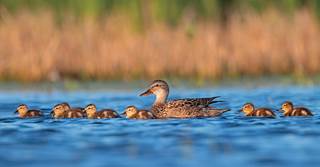
Photo GARYKRAMER.NET
"For me, it's a no-brainer," Anderson continues. "You're increasing the capacity of your ranch, and you're getting a bonus check for the easement that can help reduce your debt. It's kind of like selling your place but still owning it."
For Smith, who looked at easement opportunities from other agencies, the NRCS program fit his operation best. Because he didn't place a perpetual easement on the land, his grand-children will have the option of doing something different with it when they take over the operation decades from now.
His neighbor, Anderson, has turned into an unexpected promoter of grassland easements in his remote Montana community. "Even 10 years ago, bankers around here didn't know about the value of easements," Anderson says. "Now, if you go into a bank with a letter from an easement provider, bankers know that represents real value. They've seen cases where easement money has kept an operation in business." And, if family farms and ranches stay in business, Anderson adds, so do the small towns that depend on them.
While the cultivation of row crops will always be important on the northern plains, managing grassland for cattle in this region offers a more sustainable and profitable alternative for many producers. And more grass on the landscape to buffer wetlands and streams provides cleaner water and a host of other ecological benefits that accrue year after year.
From a waterfowl standpoint, keeping grasslands intact is crucial to maintaining the Prairie Pothole Region's reputation as the continent's Duck Factory. "Ducks nest in adjacent uplands up to two miles away from wetlands," Sanders notes. "But only if those uplands have adequate cover during nesting season."
Anderson has noticed how restoring adjacent prairie amplifies the productivity of the glacial potholes that pock his place. "You can see it happen," he says. Breeding pairs of ducks will cover the seasonal water early in the spring and then slowly disappear as hens disperse to nest in the uplands. "Where we have healthy pasture for cattle, the biologists tell me nesting success is high. All I know is the cow trails lead to water, and those trails are like highways for broods of little ducklings heading to the wetlands."

Photo MICHAELFURTMAN.COM
Recognizing the value of pasturelands to wildlife, and the role of ranchers in conserving wildlife habitats and open spaces, Ducks Unlimited is partnering with livestock producers to conserve and protect habitats in important areas for waterfowl across North America. To help strengthen these partnerships, in August of last year DU, the Public Lands Council, and Safari Club International signed a Memorandum of Understanding (MOU) with the National Cattlemen's Beef Association (NCBA), outlining the groups' shared commitment to conservation of natural resources through sustainable multiple use. Later in 2020, the US Fish and Wildlife Service was added as a signatory to the MOU.
"Ranchers, conservationists, and recreational land users all share a deep commitment to protecting our open landscapes and responsibly managing vital ecosystems and wetlands," said NCBA President Jerry Bohn. "Last year, NCBA was proud to stand with Ducks Unlimited and reaffirm that commitment by entering a historic Memorandum of Understanding with the US Fish and Wildlife Service.
We see a lot of value in this partnership, both in Washington, DC, and across the country. The partnership promotes programs that bring our communities together in conservation work that encourages biodiversity and builds a business model that will be economically sustainable for future generations."
Based in northeastern Montana, Andrew McKean is a longtime writer and editor who reports on a variety of subjects pertaining to the outdoors and conservation.
Ducks Unlimited uses cookies to enhance your browsing experience, optimize site functionality, analyze traffic, and deliver personalized advertising through third parties. By continuing to use this site, you agree to our use of cookies. View Privacy Policy